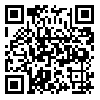Volume 23, Issue 4 (December 2019)
Physiol Pharmacol 2019, 23(4): 235-248 |
Back to browse issues page
Download citation:
BibTeX | RIS | EndNote | Medlars | ProCite | Reference Manager | RefWorks
Send citation to:



BibTeX | RIS | EndNote | Medlars | ProCite | Reference Manager | RefWorks
Send citation to:
Gharib A, Shojaie A, Zare M, Komaki A, Sarihi A. A review on the roles of electrical low-frequency deep brain stimulation and modulatory action of the serotonergic system in seizure. Physiol Pharmacol 2019; 23 (4) :235-248
URL: http://ppj.phypha.ir/article-1-1487-en.html
URL: http://ppj.phypha.ir/article-1-1487-en.html
Abstract: (2857 Views)
Epilepsy is a common neurological disorder that affects approximately 50 million people and about 30% of them have seizures despite antiepileptic-drug therapy. Even if 50% of these 600,000 or so patients benefit from surgical resection, many would still need new therapeutic approaches. Deep brain stimulation (DBS) has been suggested as an alternative to drug therapy. Low frequency stimulation (LFS) is an effective pattern of DBS that can decrease epileptic seizures. The incidence of epileptic seizures has been described by an imbalance between excitatory (glutamatergic) and inhibitory (GABAergic) neurotransmission. This phenomenon may be affected by other neurotransmitter systems, including serotonin (5-hydroxytryptamine, 5-HT). The Serotonergic system undergoes many alterations in the epileptic brain. The link between LFS and serotonin release has been studied and it is documented that 5- HT1A receptor antagonist reduces the anti-convulsant effects of LFS. Thus, considering the effects of the serotonergic system in neuronal activities in the epileptic brain, it may be involved in the anti-convulsant mechanism(s) of LFS. In this review, we introduce the effects of low frequency stimulation on seizure and its possible mechanisms. The role of some neuromodulators in mediating the anti-convulsive effects of LFS and the probable signaling changes will be discussed.
| Rights and permissions | |
 |
This work is licensed under a Creative Commons Attribution-NonCommercial 4.0 International License. |







